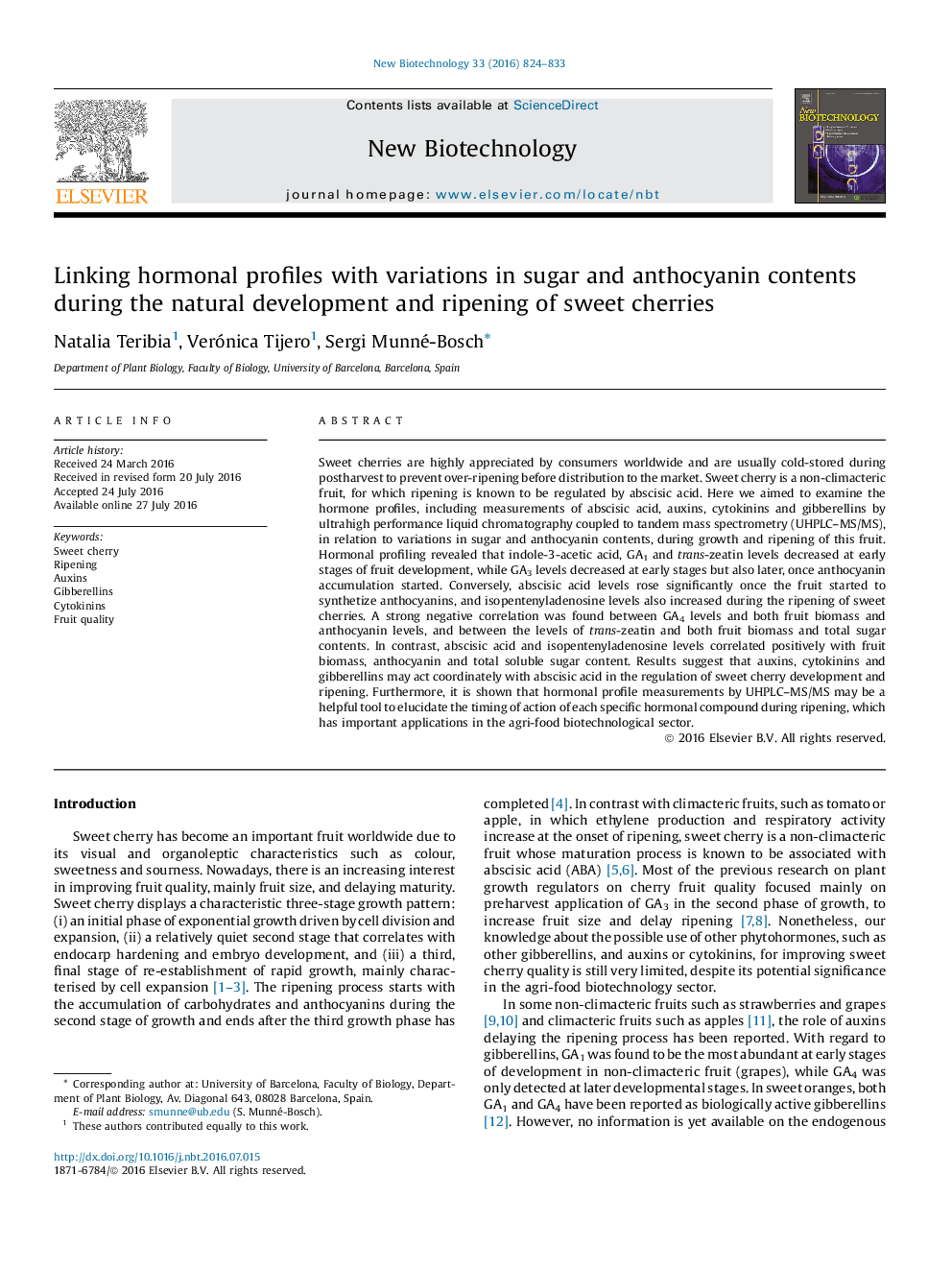| Article ID | Journal | Published Year | Pages | File Type |
|---|---|---|---|---|
| 6452884 | New Biotechnology | 2016 | 10 Pages |
â¢Auxin, cytokinins and gibberellins may act coordinately with ABA in the regulation of fruit ripening.â¢Hormonal profiling may help elucidating specific hormones involved in fruit ripening.â¢Hormonal profiling may be a good basis for the development of new products aimed at accelerating or delaying fruit ripening.
Sweet cherries are highly appreciated by consumers worldwide and are usually cold-stored during postharvest to prevent over-ripening before distribution to the market. Sweet cherry is a non-climacteric fruit, for which ripening is known to be regulated by abscisic acid. Here we aimed to examine the hormone profiles, including measurements of abscisic acid, auxins, cytokinins and gibberellins by ultrahigh performance liquid chromatography coupled to tandem mass spectrometry (UHPLC-MS/MS), in relation to variations in sugar and anthocyanin contents, during growth and ripening of this fruit. Hormonal profiling revealed that indole-3-acetic acid, GA1 and trans-zeatin levels decreased at early stages of fruit development, while GA3 levels decreased at early stages but also later, once anthocyanin accumulation started. Conversely, abscisic acid levels rose significantly once the fruit started to synthetize anthocyanins, and isopentenyladenosine levels also increased during the ripening of sweet cherries. A strong negative correlation was found between GA4 levels and both fruit biomass and anthocyanin levels, and between the levels of trans-zeatin and both fruit biomass and total sugar contents. In contrast, abscisic acid and isopentenyladenosine levels correlated positively with fruit biomass, anthocyanin and total soluble sugar content. Results suggest that auxins, cytokinins and gibberellins may act coordinately with abscisic acid in the regulation of sweet cherry development and ripening. Furthermore, it is shown that hormonal profile measurements by UHPLC-MS/MS may be a helpful tool to elucidate the timing of action of each specific hormonal compound during ripening, which has important applications in the agri-food biotechnological sector.
